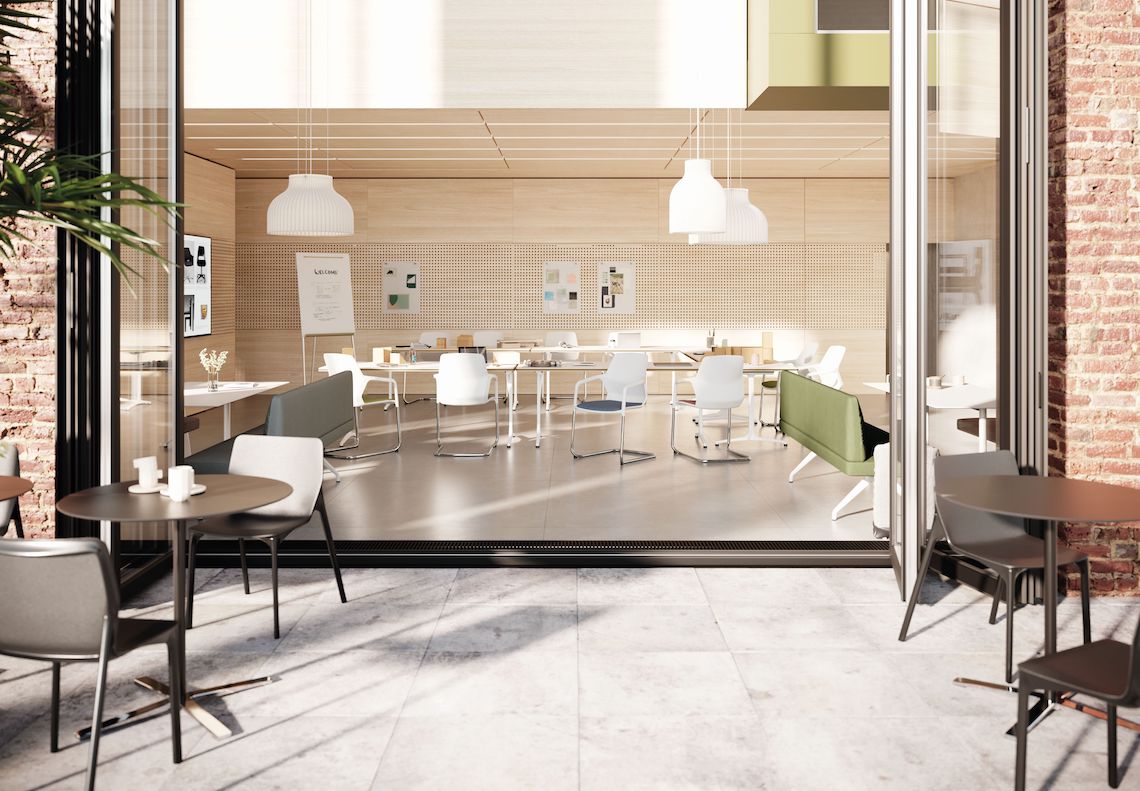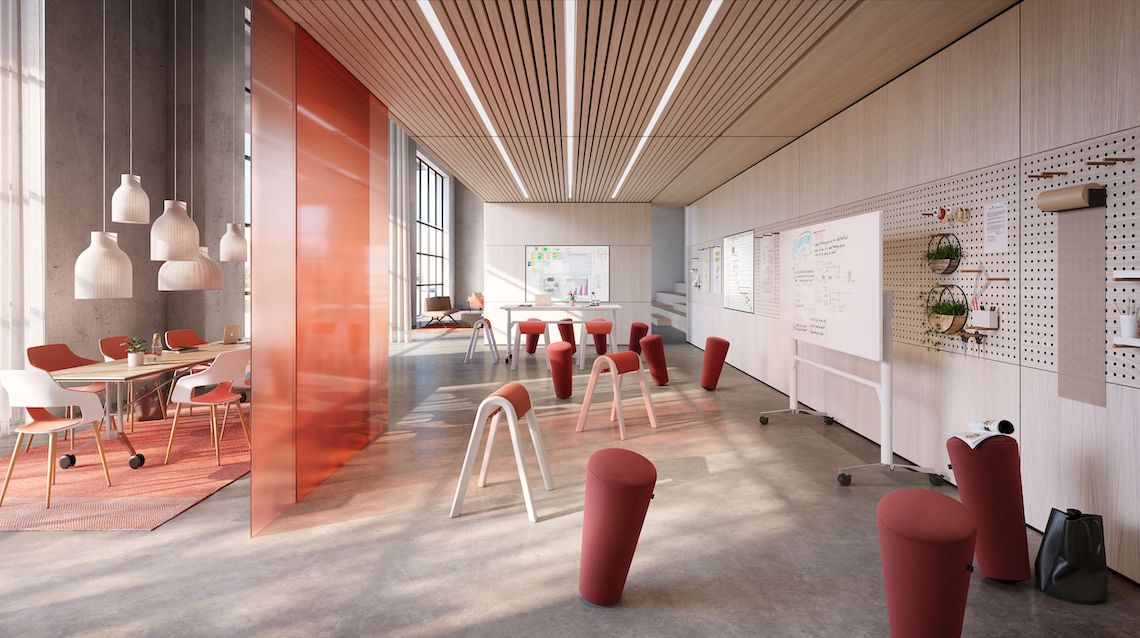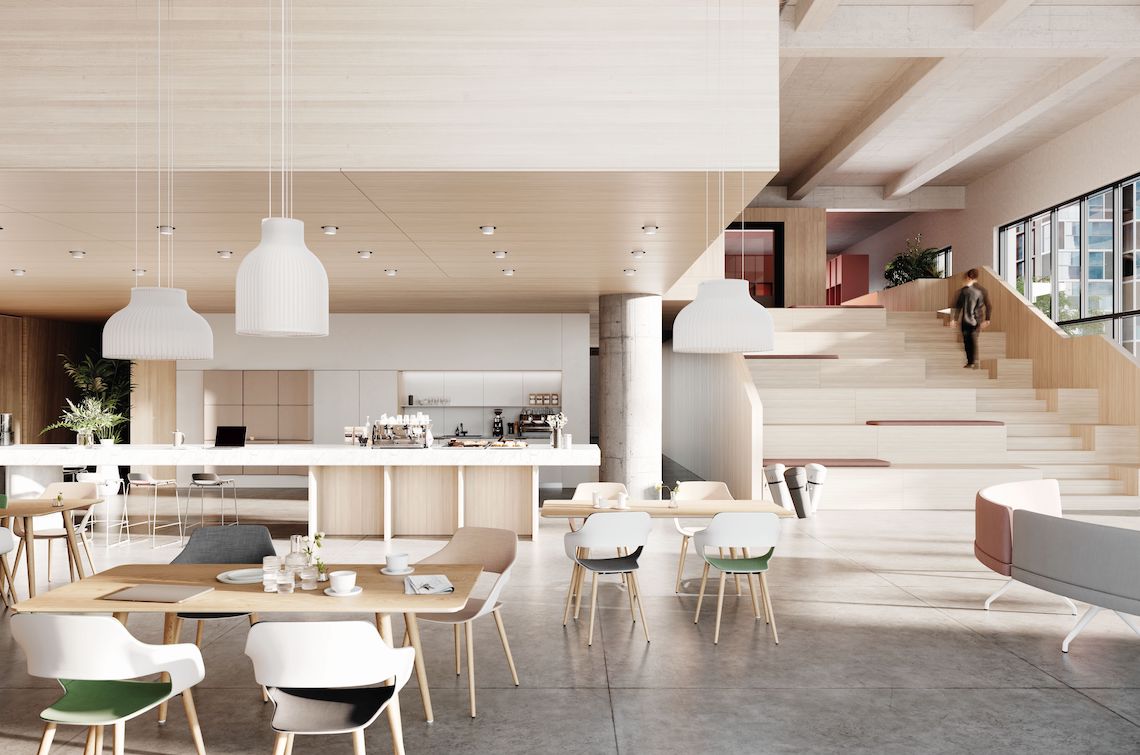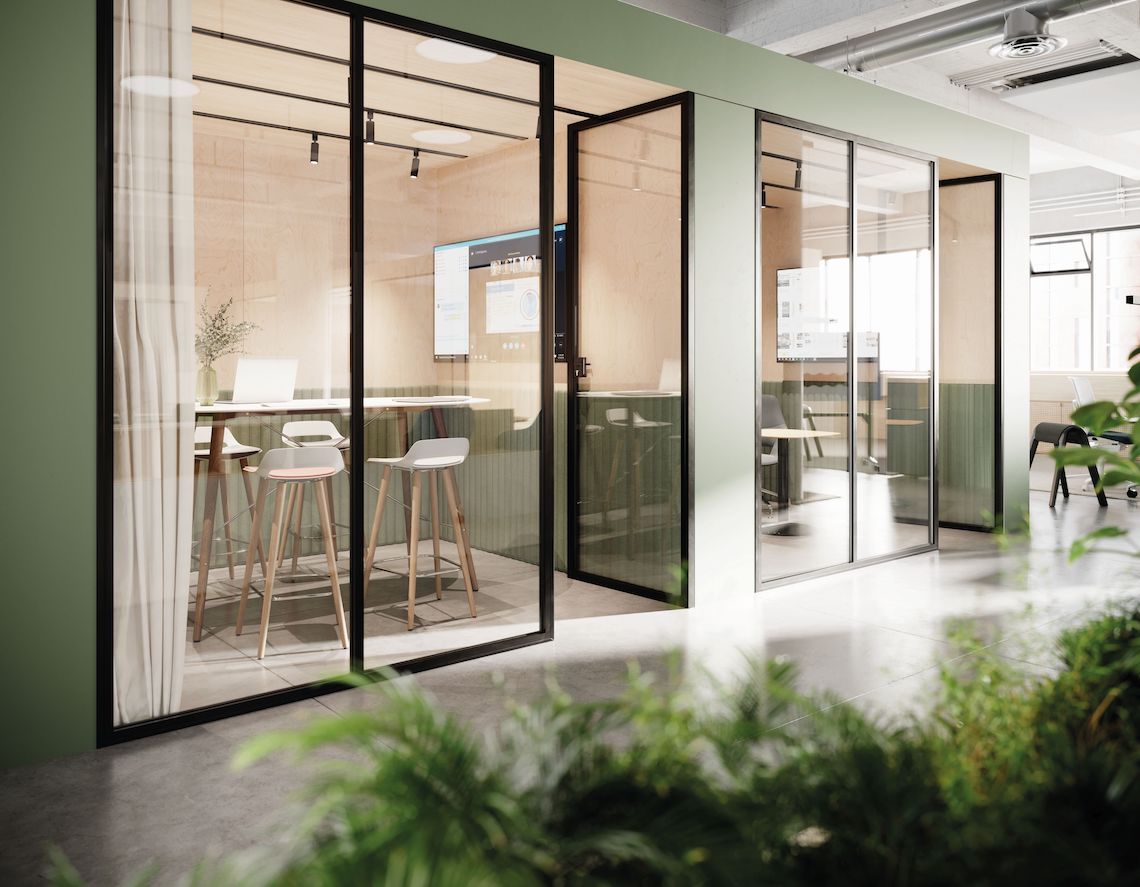Even just a few decades ago, people used to think they were done with learning once their training or college course had finished. Back then, it was commonly thought that once you’d finished school, training or your college, all the skills and expertise learnt would last you all of your career. Nowadays, virtually unlimited access to the internet has ensured that information overload is increasing exponentially and the shelf-life of any knowledge we do have is decreasing by the same token.
The office as a market place for expertise and community learning
The rising momentum of developments in all areas of life requires lifelong learning, which employers need to place on a firm footing. And what’s more, it’s no longer practical to separate the working from the learning environment. Research into the brain has long since confirmed that people learn better if several senses are stimulated. Nowadays, expertise can also be conveyed digitally, and therefore remotely, via adaptive self-learning programmes. However, for new expertise in the form of new skills to stick, lots of different kinds of interaction with other people is required. Which is why Wilkhahn’s concept of a human-centered workplace turns the office into a market place for shared expertise and learning as a community.
Training and upskilling
Scheduled communal training sessions and upskilling programmes in dedicated spaces are special types of learning. Furniture in the human-centered workplace’s seminar area can be quickly and easily adapted to group sizes, methods and multimedia equipment. In terms of their durability and ease of use, the mAx folding tables really stand apart. They nest into one another compactly and connecting leaves allow tool-free linkage so that a range of different table configurations are created. The stackable Metrik cantilever chairs are colour-matched with the white table tops and easy to grab hold of. They come in a contemporary design and are comfortable to sit on.

Insit benches arranged in groups adjacent to the glass facade invite people to work in small teams. The firm, ergonomic upholstery and standard seating height also enable working for long periods of time and can be combined with Metrik chairs to respond flexibly if numbers change.
In the case of seminars mostly consisting of talks or presentations, the breaks are the actual learning phases because people then chat and compare notes with others about what they’ve just seen and heard. A change of scene and fresh air foster this sort of interaction. Depending on the weather, the patio can also be used as somewhere for group work, or for breaks. Chassis chairs and small, round Aline tables for outdoor use are ideal.
Learning by doing as a team
Innovation spaces are primarily areas for learning. Methods such as design thinking focus on people developing, experimenting and teaching each other skills together. Positive group experiences, direct feedback and diverse types of hands-on interaction encourage people’s desire to be receptive, engaged and to recall what they’ve learnt. Participants organise the changes between settings and methods themselves.
Timetable Lift tables are mobile, cordless and come with electrically height-adjustable, flip-top table tops that can be written on. They can be used as conference tables to stand or sit at, as surfaces to write on, or as screens for presentations and photos to document results. Mobile Stand-up stools encourage a change of posture to keep body and mind on the ball. They help people forget hierarchies and learn from one another, just like the fun Sitzbocks, which can be perched at or sat on.

The space’s wooden wall panels and the laid-back meeting spot with Occo chairs and a Confair folding table behind the translucent partition have a natural, warm look. The partially perforated walls improve acoustics and can accommodate screens and material for workshops.
Learning through stakeholder dialogue
The faster markets and circumstances change, the more crucial it becomes to compare what you’re doing with your target group. The human-centered workplace has used the example of a publishing house with a café open to the public to encourage this type of stakeholder dialogue. Employees can talk to and gain feedback from guests in an informal atmosphere while eating and drinking together. What’s more, the in-built platform is an ideal place for readings and testing spontaneous reactions.

The willingness to engage openly with a range of stakeholders is probably the best and fastest way of learning. The Occo chairs and tables, as well as the Insit benches, prompt this type of interaction. The furniture’s colours and materials are coordinated sensitively with the light-flooded and natural look and feel of the interior design.
Learning in hybrid teams
Learning from one another in interdisciplinary project groups is vital, as is integrating joint learning phases into everyday working lives. The increase in remote working is also transforming the way people learn in offices. Instead of spending one or several days at a time away on training courses, digitalisation allows people to teach and learn in short modules without wasting time travelling to other locations. In the future, learning in teams will automatically involve coaches and other teams in different geographies joining a virtual meeting and project room.

In offices, learning in small groups has proved to be very efficient. Which is why small, multipurpose meeting rooms are integrated at the core of the human-centered workplace. These rooms come with large wall displays and cameras so that they can also be used for video conferences or seminars. Occo high tables and bar stools foster interaction and engagement. At the same time, people are much more energetic when they stand in front of the camera. If required, the sound-absorbent glass panels and curtains provide privacy and prevent people in the surrounding workspaces from being distracted.
Learning to grasp complexity
In digitalised working environments, the increasing level of specialisation means that it’s crucial to retain an overview and understand the complex impact that decisions and action have on other areas. Otherwise we lose sight of the big picture.
The Human Centered Workplace concept is all about four core aspects that are required for futureproof working environments – health and well-being, collaboration and innovation, identity and a point of reference, purpose and sustainability. Wherever decisions are taken, for instance about new software, new organisational models and processes, modern management and working methods, or interior design and furnishings, the impact is felt in all four dimensions.

Which is why it’s so vital to develop an understanding of what the objectives are at the beginning of a transformation process. Today, research on how people learn has shown that looking at and touching objects is a particularly effective way of stimulating the brain. Which is why we 3D-printed a tetrahedron so that people can literally grasp all four dimensions and the way these are connected. Therefore, anyone holding it in their hands intuitively learns how to think, evaluate and act in complex ways. As a result, it’s just as easy to harness synergy as it is to prevent any fall-out from decisions.
We hope that this tool will be a real help in designing working environments where people remain productive and enjoy working in tomorrow’s world too.
For further information about this topic visit our website: www.wilkhahn.com.
Planning in an unpredictable era. How can an office become a human-centered workplace or a space where people remain productive and enjoy working in tomorrow’s world too? Find out more in our blog post.
Working in the human-centered workplace. How does the human-centered workplace enable deep work? Find out more in our blog post.
Meetings in the human-centered workplace. How does the human-centered workplace foster interaction? Find out more in our blog post.
Fostering a community spirit in the human-centered workplace. Why interacting with colleagues in the office is so crucial. Find out more in our blog post.
